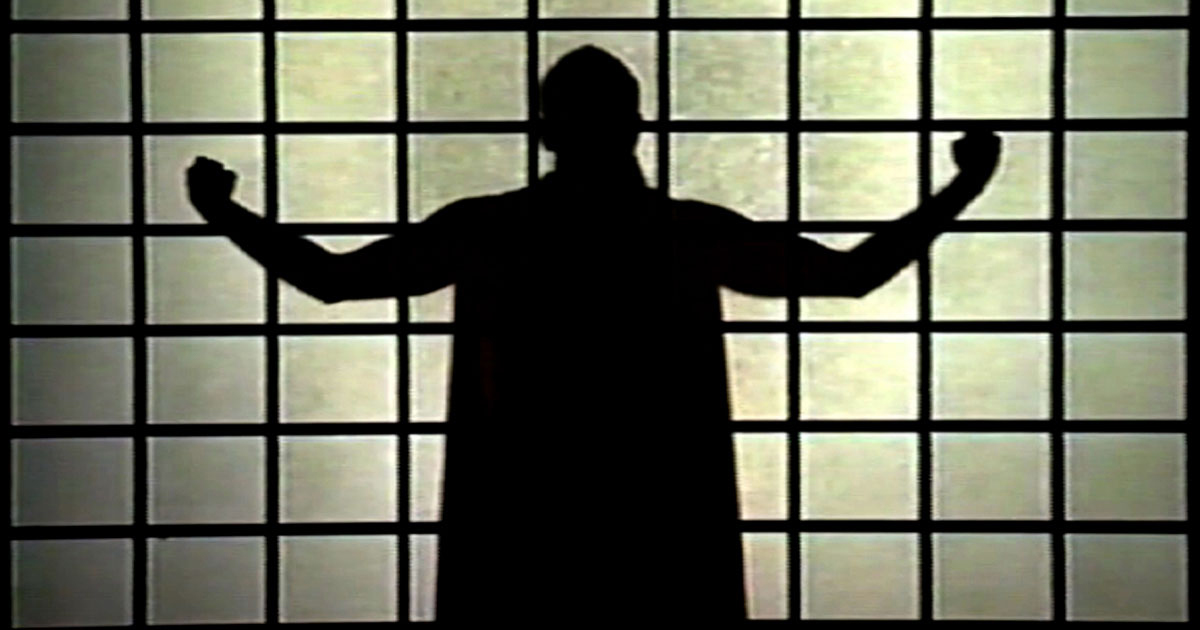Show places Shimomura’s performance art in context

UPDATE: Spencer Museum of Art galleries are closed March 14-31, 2020, and all public programs are canceled through March 31, 2020.
LAWRENCE – Roger Shimomura’s paintings are held by the Smithsonian Institution, along with many other museums and collections. But what about the performance art he created and that he considered so important during his 35-year teaching career at the University of Kansas Department of Visual Art?
Those performances come back to life, arranged chronologically and placed in the context of related paintings, in the exhibition “Staging Shimomura,” opening Saturday, Feb. 29, and on display through June 21 at the Spencer Museum of Art.
There is even an improved version of an old piece, created with new technology by Shimomura’s longtime artistic collaborator and KU technology staff member Joel Sanderson. It viscerally places museum-goers inside the World War II-era Minidoka internment camp in southern Idaho for Japanese American, which was a formative experience in the artist’s life and work.
The exhibition follows the publication of the book “Masking Identity: The Performance Art of Roger Shimomura” (Asian American Art Publications, 2019) by Krystal Reiko Hauseur. The author will speak April 2 at the museum for one of several events related to the exhibition.
Sanderson and Spencer Curator Kris Ercums will join Maki Kaneko, associate professor of the history of art, for a panel discussion Thursday, March 5, on the exhibition's creation, titled “The Anatomy and Afterlife of Performance Art.”
Ercums said much of Shimomura’s artistic production – painted, performed and otherwise – is inspired by the diaries kept by his grandmother Toku Machida Shimomura during her immigration from Japan to Seattle and on through the family’s three-year-long internment at Minidoka.
The show starts with a section titled “The Pop Culture and Andy Warhol,” which was the title of Shimomura’s 1969 master’s thesis on the man whose conceptual art was so influential on his own. It includes a video monitor showing Shimomura’s Warhol-film pastiche titled “Back” – six minutes of a naked man standing with his back to the camera.
“Toku’s Dance” was Shimomura’s first public performance-art piece, staged locally in 1984. It is represented in the exhibition with a video taken at the time of the seven-minute performance, along with costumes and props used therein. A large painting inspired by the same subject matter is nearby, allowing viewers to compare them.
Shimomura continued in this vein for several years, and the exhibition documents each of his major performance works: “The Seven Kabuki Plays Project” (1985-87), “Trans-Siberian Excerpts” (1987-89), “California Sushi” (1989-90), “The Last Sansei Story” (1990, 1993), “La Carta” (2001) and “Amnesia” (2002).
Ercums said most of the physical objects in the show – the props, masks, signs, costumes, storyboards and other ephemera — come from Shimomura’s own archives. Sanderson said most of the video comes from his collection.
Sanderson was a student of Shimomura’s in the 1980s, collaborating with him on the music, production and videotaping of the early performances. He contributed to the current exhibition from his archives and consulted with Shimomura and Ercums to recreate the video and audio portions and to restage “Relocation Luncheon,” which was first a 1996 exhibition at Intermedia Arts in Minneapolis.
“This is a totally new version,” Sanderson said. “We started from scratch. I redid the entire thing because the original was done in VHS format and played from VHS tape. When I tried to blow it up on a contemporary TV in HDTV, it looked terrible, so I started over.
“I remastered the soundtrack and then rebuilt the video from the ground up. We never were able to finish it at the time because of the technology. Roger wanted to have a guard tower behind the barbed wire, and the logistics of setting up all that to film proved impossible. This time it took me nine months to rebuild it, and I did it all with digital special effects and digital paintings, so now it's what I feel the vision should have been originally.”
“I feel like we’ve really heightened the drama with this new presentation, and it will be very moving,” Ercums said.
Ercums noted that Shimomura was the first person to teach a performance art class at KU. The professor emeritus will receive an honorary doctorate at KU’s 2020 Commencement ceremonies in May. So it seems appropriate that this career-spanning exhibition will be up during that weekend.
“He often said that performance was one of the richest aspects of his academic career,” Ercums said. “We want to link the paintings and prints to kind of flesh out his entire artistic practice. Everybody concentrates on the painting and the prints — on the two-dimensional. But those paintings and prints very much inform, and, in turn, are influenced by the performances. So you have to see it all to get the whole sense of Roger’s artistic vision.”
Photo: Still taken from a video of performance art by Roger Shimomura, part of the exhibition Feb. 29-June 21 at the Spencer Museum of Art. Credit: Courtesy Joel Sanderson / Spencer Museum